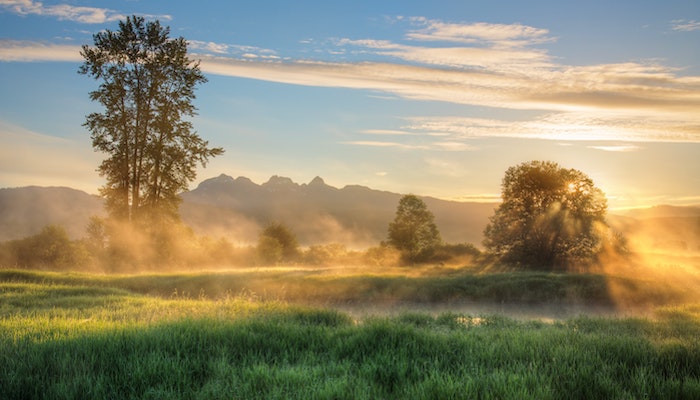Blog: Plant Medicine: Moving Between Worlds
By Sebastian Segovia
Sebastian Segovia is a psychotherapist and is currently enrolled in the Depth Hypnosis Practitioner and Applied Shamanism programs at the Sacred Stream. He lives in Columbia where he works closely with several indigenous groups studying plants and plant medicine.
In 2005 I turned eighteen. My parents were getting divorced. We were about to lose our house with the bank and I was finishing high school and starting university. I was beginning to experiment with alcohol and recreational drugs. That is when my mom decided to take me to an ayahuasca ceremony as my birthday present. This was the moment my world open to the sacred world of plant medicine.
I first studied plant medicine with the Kofan tribe of Putumayo, in Colombia. We have had an ancient tradition of plant medicine in our country for centuries, and this indigenous community was the first to share ayahuasca openly with non-native people, long before the plant became mainstream. Taita Querubín Queta Alvarado—108 years old now—was the first shaman (“Taita” in Spanish) I received yagé (ayahuasca) from. His lineage made it possible for ayahuasca to travel all over the world back then, and it was from his hands that this medicine touched my heart for the very first time.
After several years I became a shaman’s apprentice in a different circle, and there I got to know that shamans are human too. I started to see the use and misuse of plant medicine, and the lack of coherence between words and deeds. I saw how shamans could be driven by jealousy, selfishness, and greed, and above all, the lack of accountability and personal responsibility within their own circles. My path with ayahuasca hasn’t been easy. People betrayed me, but despite those experiences, the plant’s spirit never left me.
In 2010 I started to work with indigenous peoples of the Arhuaco tribe of Santa Marta, Colombia. They taught me about the wisdom of coca leaf and instructed me on how to read nature’s speech. Then in 2020 I met the Muruy tribe of Amazonas, Colombia, and with them I learned about tobacco, rapeh, mambe and ambil. In 2022, the Kamentsá tribe of Putumayo, Colombia took me under their wing, and officially allowed me to start my training as a healer and ayahuasca facilitator. This occurred almost two decades after my initiation on the path.
Throughout these years I’ve had the chance of sharing ordinary life with indigenous people. I’ve learned from and with them. I’ve witnessed the most basic, simple, and ordinary aspects of their relationship with plant medicines. They don’t romanticize their plants. They don’t idealize their meaning. They respect and care about the medicine, but don’t go overboard. They see the plants as both a normal and sacred part of their lives. I’ve gone with them deep into the mountains and the jungle to find the medicine and have picked it with my own hands. I’ve processed plant medicine with them while we waited for lunch to arrive, and have taken the medicine right next to the kitchen after swinging and chatting in our hammocks. These tribes people don’t over-decorate the plants, nor the experience. They do not create overly elaborate rituals; here we just take the medicine with respect.
I’ve had hundreds of experiences with plant medicines, and dozens of shamans have taught me about these plants. There are differences and similarities, and I’ve found there is a common ground: shamans are connected. They are connected with God, with the planet, with spirits, and they have an unshakable sense of connection within. Yet, this connection is not totally free of ego. Some are more in integrity than others. I’ve seen the whole spectrum with ayahuasca and other plant medicines; I have witnessed blessings as well as unethical power dynamics and even deceit. These ego dynamics have been made worse by the popularizing of ayahuasca in contemporary societies, which bring with them capitalism, greed, and opportunities for gaining wealth by selling the plant.
At the age of one and a half years old, I was at the edge of death because of devastating meningitis. I miraculously survived with almost no physical consequences, besides becoming deaf in my right ear, but the big effects took place in my consciousness and spirit. I became terribly dissociated. I lived as a ghost in a shell for years until, by fluke or fortune, I came to meet Isa Gucciardi, PhD, and her teachings. I had no idea about how shamanism worked outside of my borders, and I never had the experience of learning about it from people other than my local indigenous people. More than that, it was unbelievable for me to imagine that shamanism could have any kind of link with Buddhism and psychology. But it was with this encounter with a completely different paradigm that I was able to finally heal my body and spirit.
As a Dzogchen practitioner, I was struck by the way Isa has integrated Buddhism, shamanism, and psychology. Her programs in Depth Hypnosis and Applied Shamanism were the perfect match for my spiritual, professional and academic background; at the same time, it was the only way my spirit was able to come back into me and definitively heal my dissociation.
I decided to get to know more about Depth Hypnosis, and it was only because of the infinite love and generosity of many beings that I was able to keep on studying at the Foundation of the Sacred Stream because of a scholarship I was awarded. This has been a blessing for me, and has filled my heart with motivation and encouragement for the dreams I want to achieve. One of them (maybe the biggest one) is to help bring ethics back into plant medicine circles.
As I walked further on my education with Isa, I started to realize that her approach toward shamanism was almost entirely different from the one I had experienced throughout my life. This brought in a serious cognitive dissonance to me, and challenged many of my belief systems. As I mentioned before, shamanism and plant medicine are something utterly organic here in Colombia. We approach them naturally and spontaneously, without any of the considerations I was getting to know as part of the Applied Shamanism and Plant Medicine Integration classes. For me it was so hard to understand why all these structures were needed. It was too much mind and reasoning being put on something that all my life had been as easy and unelaborate as making a tea; but there I was, learning a lot of procedures that didn’t make sense to me. However, I was open to receiving these teachings, and while talking with Isa during a class, finally I could see her reasons for presenting this the way she does. She said:
We are walking a complicated path with the plants today. A path that is much more complicated than the path that people have traditionally walked with the plants in traditional cultures … The thing that I’ve noticed over these 30 years, is that people are more disrupted than they were, because they are living in an environment where they have lost connection with the earth and with the wisdom of the earth generally. And that sense of disconnection ripples through their psyches, all the way through the sense of disconnection with the self, and then all the terrible manifestations that can come out of that disconnection … It’s a massive, social experience of disconnection … You have people that really have lost their way and can’t find their way back. They are looking for plants to do it for them, and they need some basic work in order to be able to hold what the plants are showing them … What I’m trying to do with this education is to help people create a larger kind of basket, a basket where people can work on the different levels of their experience where they need healing in order to be able to hold what the plants are going to show them, or to be able to recognize what the plants have shown them.
Watch: Isa Gucciardi Discusses Sacred Stream’s Plant Medicine Integration Certificate Program
This finally put all the pieces of the puzzle together for me. I saw the dilemma Isa spoke of as we bridge the worlds of traditional plant medicine practices and their movement out into the world. In these times, we are experiencing a vast and rapid expansion of plant medicine work around the globe, and the ancient shamanic teachings are becoming a cool “trending topic”. It has become far too easy for people to obtain the label of “shaman,” “facilitator,” or “healer” in mainstream events and/or just a weekend-long retreat. As this work moves out into the world, it has helped and healed many people, but has also caused harm and mistrust in and out of the circles where shamanism and plant medicine are being shared today.
The disconnection Isa talks about has pervaded not only the ones looking for help, but also those who are providing the help. It is far too common for even those with good intentions to overlook the places where they need to first heal themselves. There is confusion, hurrying, unhealed issues, spiritual bypassing, and trauma that needs to be addressed before facilitating plant medicine circles. Today, more than ever, we need teachers who have thoroughly walked the healing path to help us elucidate the confusion we live in, and assist us in accessing the tools we all carry within.
Integration between traditional indigenous ways and new therapeutic approaches, is a much needed endeavor and one that must be done with consciousness and respect. If we can first do the hard work necessary for reaching a true and honest connection with ourselves, it will then be possible to bridge the disconnection that exists between the plants and us. And in this way, we’ll be able to honor the spirit of the plants in a way that reflects and honors the spirit that lies within us all.
ENJOYING THE STREAM OF CONSCIOUSNESS BLOG? SIGN UP FOR FREE UPDATES!



